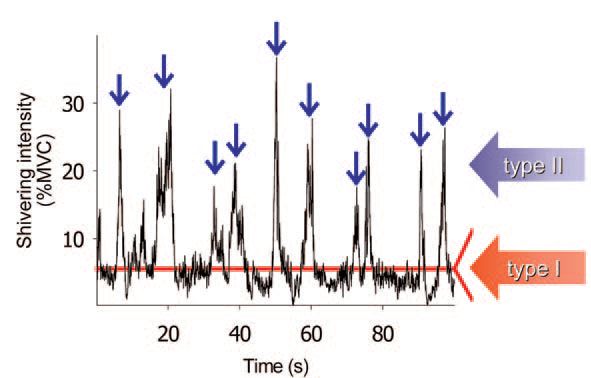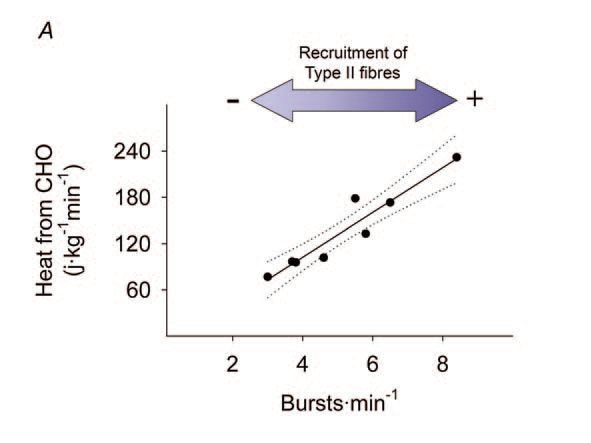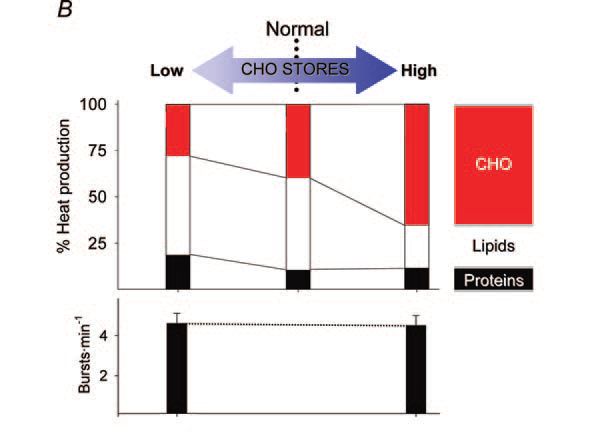
Physiology News Magazine
The fire within: fuel selection in shivering muscles
François Haman and colleagues are looking for essential clues on what limits human survival in the cold
Features
The fire within: fuel selection in shivering muscles
François Haman and colleagues are looking for essential clues on what limits human survival in the cold
Features
François Haman, Stéphane R. Legault, Jean-Michel Weber
Biology Department, University of Ottawa, Canada
https://doi.org/10.36866/pn.58.26

Keeping warm bodies in cool environments has been a critical challenge for endotherms since their origin on Earth. As furless mammals, humans are particularly vulnerable to cold, and have trouble coping with even slight decreases in ambient temperature. Without access to proper clothing or shelter, our survival is limited to a few hours during accidental cold exposure. When this happens, a lethal decrease in body temperature is prevented, at least temporarily, through a rapid increase in internal heat production. In adults, this process is mainly supported by shivering thermogenesis, whereby skeletal muscles become metabolic furnaces that generate heat from the oxidation of carbohydrates (CHO), lipids and proteins.
The relative contribution of these different fuels is the subject of heated(!) debate because fundamental questions about cold endurance remain unanswered: what selection mechanisms govern the mixture of fuels we use, and how does this choice affect our survival? From a practical perspective, designing new means to improve survival by manipulating fuel selection would clearly be useful. Even though complete answers to these questions are not available, important advances have been made recently in this field of human physiology.
Over the last decade, most studies of fuel metabolism in cold-exposed humans have focused on CHO (glycogen) as a possible limiting factor for shivering (this fuel only represents ~1% of total energy stores and is known to limit endurance exercise events such as marathon running). Therefore, in the absence of quantitative information on heat generation from fuels other than CHO, the role of lipids and proteins had been consistently underrated. Recent experiments during prolonged, lowintensity shivering show that lipids can produce more heat than all other fuels combined (Haman et al. 2002). In addition, it is now clear that heat production is not affected by depleting CHO reserves, either at low- or highthermogenic rate, because lipid and protein oxidation are both stimulated to compensate for the reduced contribution from CHO (Young et al. 1989; Haman et al. 2004c). Contrary to what was previously thought, these results suggest that CHO may not be essential for shivering. More importantly, they demonstrate that heat production can be sustained for several hours, even when CHO reserves are depleted, because humans show remarkable flexibility in fuel selection.

Selecting a mixture of fuels can either be achieved by recruiting distinct muscle fibre populations specialized for different fuels or by mobilizing different metabolic pathways within the same fibres. Therefore, heat production depends critically on co-ordinating muscle fibre recruitment and oxidative fuel metabolism. Traditionally, research on shivering falls in two broad categories dealing either with muscle metabolism or with electrophysiological aspects of muscle recruitment. We reasoned that combining these complementary approaches would provide valuable insights. Detailed electromyographic analyses (EMG) by Meigal (2002) identified two shivering patterns associated with the recruitment of specific muscle fibers: continuous, lowintensity shivering (or thermogenic muscle tone) and burst shivering of high-intensity. While continuous, lowintensity shivering is linked to lowthreshold fibres (type I, slow-oxidative, fatigue-resistant), high-intensity burst shivering is associated with highthreshold fibres (type II, fast-glycolytic, fatigable) (Fig. 1). Because these two fibre types are biochemically specialized for different fuels (type I: lipids; type II: CHO), we hypothesized that changing the relative importance of low-intensity shivering and burst shivering might be a key mechanism of fuel selection. During high-intensity shivering, our hypothesis was confirmed; we found that changes in fuel selection are achieved by recruiting different ‘fuel specific’ fibres (Fig. 2A (Haman et al. 2004b). Even though this important mechanism of selection has been thought to play a key role in exercise, our shivering study is the first to provide direct evidence of its existence. Therefore, EMG signals contain quantitative information on fuel metabolism during high-intensity shivering. In contrast, during low intensity shivering, the alternate mechanism of fuel selection is used: CHO-depleted and CHO-loaded individuals are able to sustain the same rate of heat production by oxidizing very different fuels within the same muscle fibres (Haman et al. 2004a) (Fig. 2B).


Where do we go from here? Results from these studies, together with our novel experimental approach, provide a new direction for shivering research. The physiological significance of the dual shivering pattern is puzzling and should be clearly characterized in relation to fuel selection and thermogenic rate. The detailed study of shivering bursts, as it relates to the average fibre composition of each individual, will provide essential clues on what limits human survival in the cold. One cannot investigate muscle physiology without marveling at the remarkable flexibility of this tissue: from well co-ordinated movements to intense heat production. So… if exercise physiology leaves you cold, turn to shivering.
References
Haman F, Legault SR, Rakobowchuk M, Ducharme MB & Weber, JM (2004a). Effects of carbohydrate availability on sustained shivering II. Relating muscle recruitment to fuel selection. J Appl Physiol 96, 4149.
Haman F Legault SR. & Weber JM (2004b). Fuel selection during intense shivering in humans: EMG pattern reflects carbohydrate oxidation. J Physiol 556, 305-313.
Haman, F, Peronnet F, Kenny GP, Doucet E, Massicotte D, Lavoie C & Weber JM (2004c). Effects of carbohydrate availability on sustained shivering I. Oxidation of plasma glucose, muscle glycogen, and proteins. J Appl Physiol 96, 32-40.
Haman F, Péronnet F, Kenny GP, Massicotte D, Lavoie C, Scott C & Weber JM. (2002). Effect of cold exposure on fuel utilization in humans: plasma glucose, muscle glycogen, and lipids. J Appl Physiol 93, 77-84.
Meigal A. (2002). Gross and fine neuromuscular performance. Int J Circumpolar Health 61, 163-172.
Young AJ, Sawka MN, Neufer PD, Muza SR, Askew EW & Pandolf KB (1989). Thermoregulation during cold water immersion is impaired by low glycogen levels. J Appl Physiol 66, 1806-1816.
